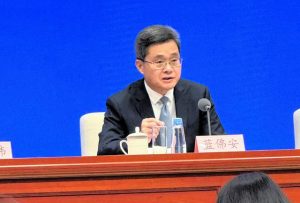As Japan approaches its general election on October 27th with no new significant domestic developments, USD/JPY continues to hover around the 149 yen level.
The current U.S. economic landscape presents a “Goldilocks scenario” once again: robust economic indicators coupled with expectations of further rate cuts due to moderating inflation.
While the outcome of the November 5th presidential election remains uncertain, both the Dow Jones Industrial Average and the S&P 500 index reached all-time highs on the 11th.
Last week, I highlighted the need to monitor developments in the Middle East and China. The subsequent events have only reinforced the narrative of the U.S. economy’s singular strength.

Regarding the Middle East, market participants anxiously awaited Israel’s response to Iran’s ballistic missile launch on October 1st.

The longstanding enmity between Iran and Israel had, until last year, been characterized by indirect confrontations.
Iran limited itself to indirect attacks through Hamas and Hezbollah, while Israel focused on preventing Iran’s nuclear development through covert operations, avoiding military confrontation.
This paradigm shifted in April when Iran launched direct drone and missile attacks on Israel.

A full-scale escalation was averted as Iran provided advance notice, and Israel intercepted most of the attacks with its air defense system.
Israel retaliated by striking Iran’s air defense radar facilities.
The October 1st attack, however, included hypersonic ballistic missiles, which partially penetrated Israel’s air defense systems.
Israeli Prime Minister Netanyahu has vowed retaliation, adding to the geopolitical uncertainty.
The situation is further complicated by the rising influence of right-wing factions in Israel, some of whom advocate for protecting Western societies from a nuclear-armed Iran.

Any Israeli strike on Iranian nuclear facilities could potentially escalate into a full-scale conflict, significantly impacting the global economy through oil prices.
The proximity of the U.S. presidential election adds another layer of complexity.
While President Biden urges restraint, former President Trump advocates for preemptive strikes on Iranian nuclear facilities.

The market has found some relief in Israel’s restraint thus far, but the potential for an “October Surprise” influencing the U.S. election remains a concern.
In China, Finance Minister Lan Fo’an’s October 12th press conference hinted at the possibility of expanding debt to increase fiscal deficits, though specific details were not provided.

Concrete decisions are expected at the upcoming NPC Standing Committee meeting in late October.
China’s September CPI, released on October 13th, showed a year-on-year increase of 0.4%, with core inflation (excluding food and energy) at a mere 0.1%.
These figures suggest that China may be entering a deflationary phase reminiscent of Japan’s past experiences, driven by the collapse of the real estate bubble and resulting excess supply capacity.
While Chinese stocks rallied following the government’s September 24th policy package announcement, foreign investors’ optimism has waned due to the lack of additional stimulus measures post-National Day holiday.

The market eagerly anticipated subsequent fiscal stimulus measures, recognizing the essential role of fiscal spending in addressing lack of demand, as demonstrated by Japan’s experience.
This week, attention turns to the ECB meeting on October 17th.
The market participants widely expect a second consecutive 0.25% rate cut, which would lower the policy rate to 3.25%.
Europe continues to face economic headwinds.

The German government has revised its 2024 growth forecast from 0.3% to -0.2%, potentially marking a second consecutive year of economic contraction.

Additionally, Fitch has downgraded France’s rating outlook from “stable” to “negative” due to rising fiscal and political risks.

For the foreseeable future, the U.S. appears poised to remain the sole engine of global economic growth.







